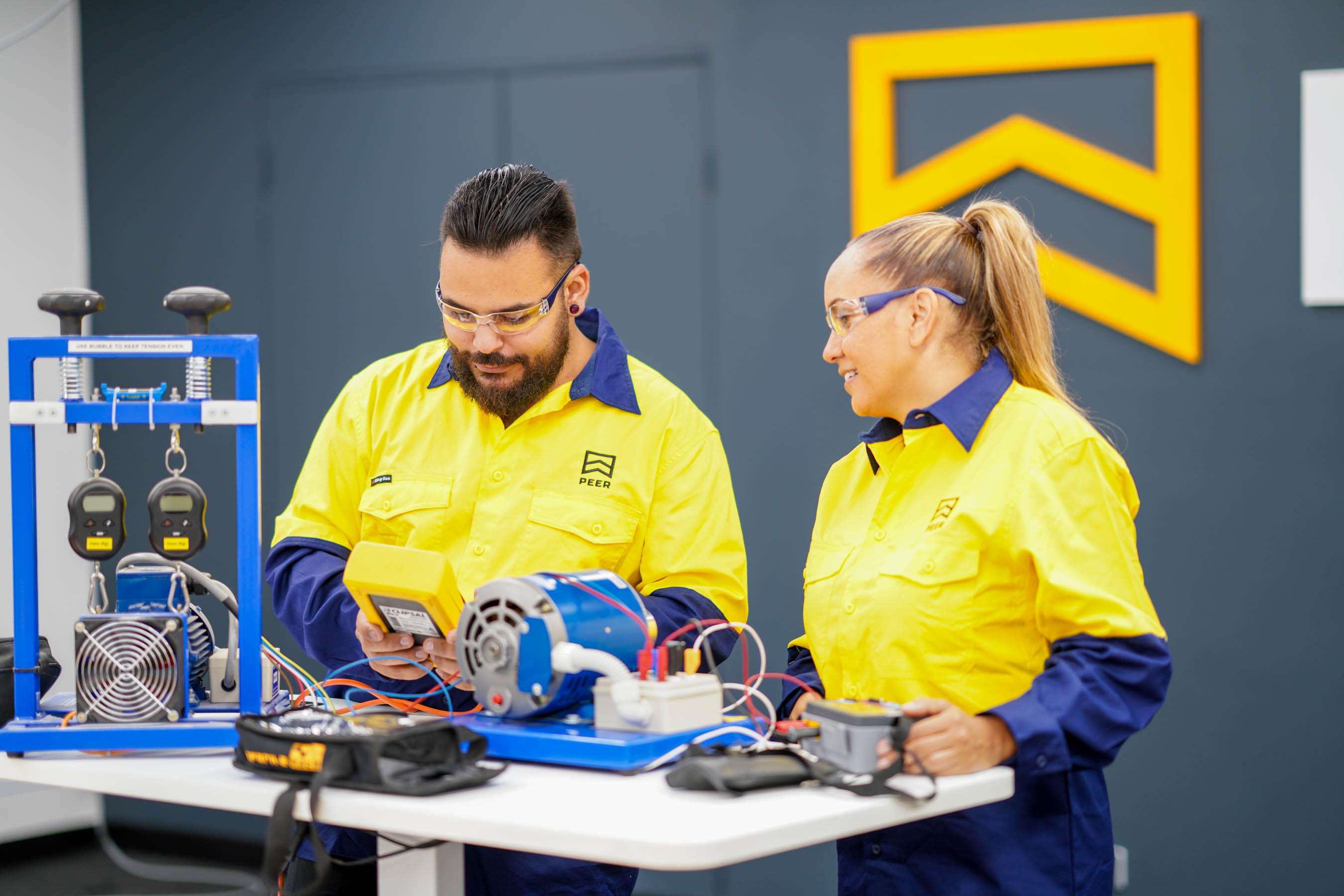Source: ABC’s Behind The News
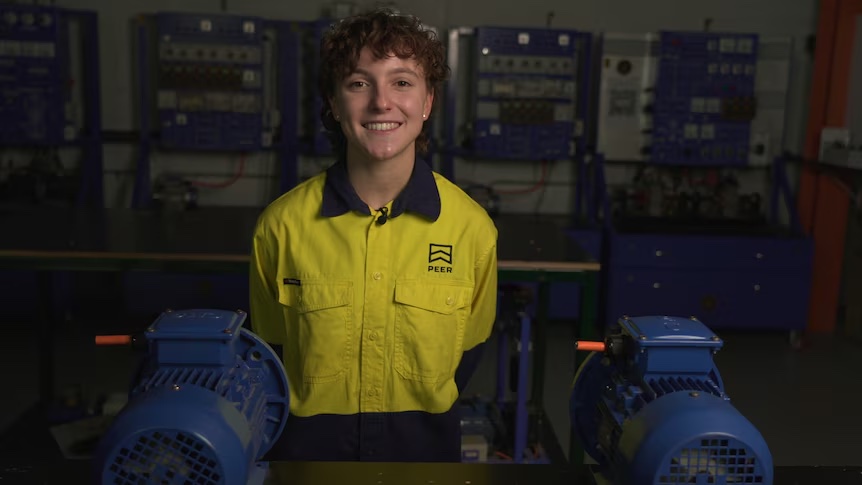
Isabella loves her job as an electrical apprentice. (ABC News: Simon Goodes)
Isabella, 20, was always a hands-on kid.
“I loved Lego growing up, loved helping in the garden, and I was just really inspired by my dad,” she says.
“He [Dad] was a tradie, and I just always wanted to help him out as much as I could, so it’s definitely a big part.”
Throughout school, Isabella loved physics, metalwork and woodwork, and even built her own electric guitar.
“Completely from scratch!” she says.
“Carved the neck by hand, the body we did with the CNC router [computer numerical control, which is a computer-controlled cutting machine], and then we had to solder all the electrical parts.
“It was so cool – it was seeing a completely different world.”
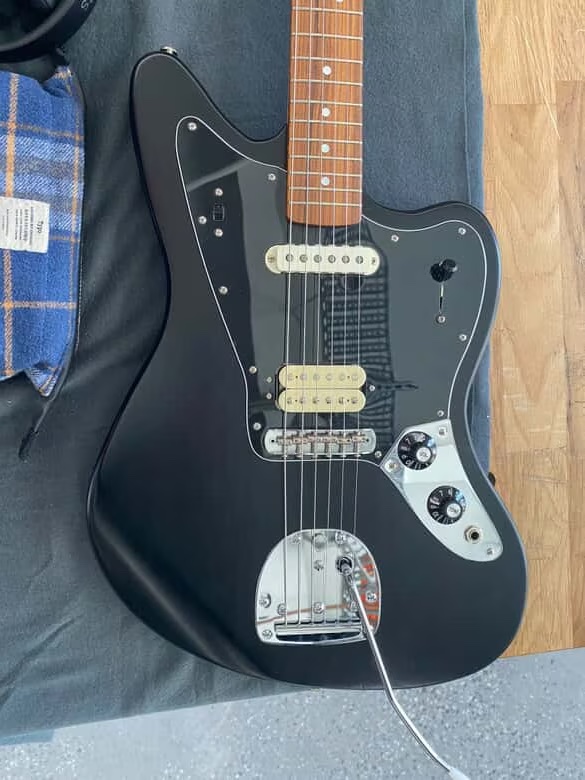
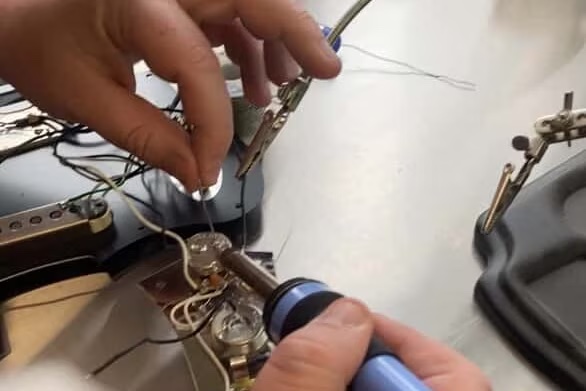
Despite this, when it came to deciding on her future, pathways to “hands-on careers” didn’t appear to be on the table.
“I went to a private all-girls school and trade really wasn’t even an option for me,” she says.
“I was told I had to apply for uni; literally, they would make sure we applied, otherwise they were like, ‘We can’t let you graduate.’
To keep everyone happy, Isabella did apply for university, but she knew she would never go.
Instead, she started an electrical apprenticeship.
“I love my job,” she says.
“We’re building Australia and we’re building the world.”
Josef, 18, a third-year plumbing apprentice, says, “Everyone needs a tradie.”
“If you don’t have a plumber, you don’t have a toilet. If you don’t a sparky, you don’t have lights,” he says.

“If you don’t have a tradie, you don’t have anything — you don’t have a house to live in.”
While everyone may need a tradie, at the moment, not everyone can access one.
“There’s a massive shortage of tradies right around Australia,” says Will Frogley, CEO of Master Builders South Australia.
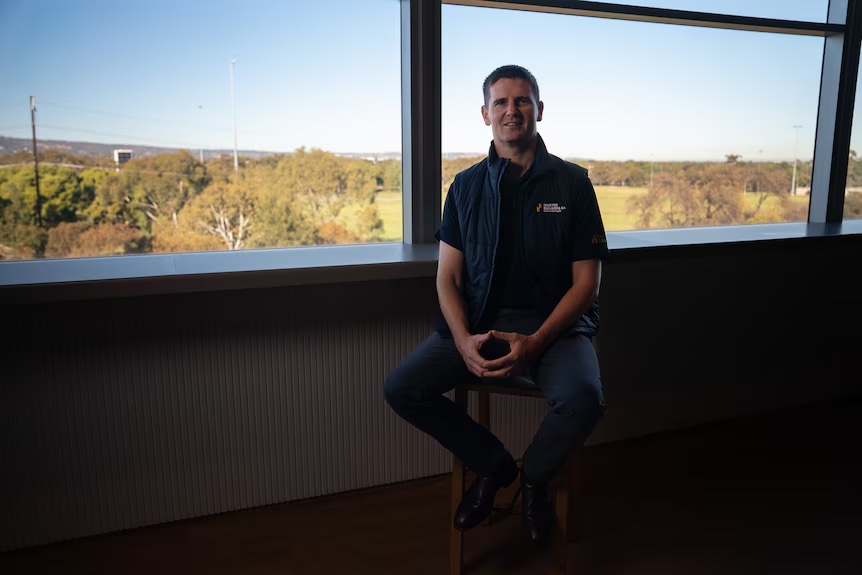
He says stigma — what Isabella experienced in high school — is impacting on the number of people taking up apprenticeships.
“I think we’re seeing this [trade] shortage because, for so many years, kids were told they had to go to university … otherwise, you’re second rate almost.
“Nothing could be further from the truth.”
More tradies ‘desperately needed’
According to Monash University’s 2024 Australian Youth Barometer report, 70 per cent of young people aged 15 to 19 say they plan to go to university after school.
For apprenticeships, the numbers are far lower, with only 15.2 per cent of males, 9.2 per cent of gender-diverse young people, and 4.1 per cent of females planning to do an apprenticeship.
Looking at figures, it is no surprise that the number of people starting apprenticeships and joining the trade sector has not kept up with population growth over the past 10 years.
“Without enough people, construction work takes longer, it’s more expensive, and the quality can suffer as well, so we really desperately need more tradies,” Mr Frogley says.
Master Builders Australia estimates that the industry needs an extra 130,000 workers to reach the government’s national target of 1.2 million new homes by mid-2029.
The apprenticeship “earning while learning” model has always been a selling point, however, apprenticeship wages aren’t particularly high, and some say this is contributing to the tradie shortage.
“The wages are a bit challenging sometimes when you’ve got car insurance to pay for and rego or your car’s broken down,” Josef says.
“That can be hard if you’re not a good saver.”
The federal government has been targeting wages to entice more people to take on a trade.
Earlier this year, the Albanese government announced an incentive that would pay housing and construction apprentices $10,000 in five instalments over the duration of their training, with more given to those who live away from home.
Mr Frogley says incentives like this do make a difference.
“We need to make it as attractive as possible to be an apprentice,” he says.
“You can earn more money today doing something else.
“But my message is if you stick with it, once you finish your apprenticeship within a few years you can be earning really good money and that’s why it’s really rewarding to stay the course.”
This is Josef’s perspective, too.
“Once you’re qualified as well, the money’s just, you know, pretty insane for what it is and what you can do,” he says.

Not just about the money
The tradie shortage doesn’t start and end with money, though. Some in the industry say there are cultural challenges that contribute to the fact that almost half of apprentices don’t finish their training.
“I’ve had a lot of mates do apprenticeships and then not follow through … it was very challenging times for them,” says Josef, who believes there should be more support for apprentices while they’re doing their training.
“Some companies and some tradespeople [are] very hard on the apprentices – it’s sink or swim.
“Maybe some bullying as well; some people face that.”
Mr Frogley says generational change in the industry can contribute to these challenges.
“There’s a mindset from some of the old guard in the industry that kids lack resilience these days, they don’t know how to work, they’re much more high maintenance than they used to be,” Mr Frogley says.
“But at the end of the day, it is a different generation, and they want more support, so you give it to them to help them succeed.
“That’s what it’s all about.”
Gender disparity in the trade sector is another significant factor when it comes to the tradie shortage.
Fewer than 3 per cent of people on the tools in Australia’s building and construction workforce are women.
“We need way more female tradies,” Mr Frogley says.
“But you’ve got to get the basics right if you want to attract more women into the industry.”
When it comes to basics, we’re talking as basic as an accessible bathroom.
Isabella says the worst thing she’s experienced is the lack of female toilets on sites.
“I’ve been on a couple of job sites where I’ve been told to drive to the closest servo for a toilet, where there’s been a block of men’s toilets with urinals in it,” she says.
“So, obviously, I don’t want to go in there, and then they won’t have a female toilet at all.
“There’s also a lack of sanitary facilities in women’s toilets when they are on site.”
For Isabella, having more women on site means having a more diverse skill set, which benefits everyone.
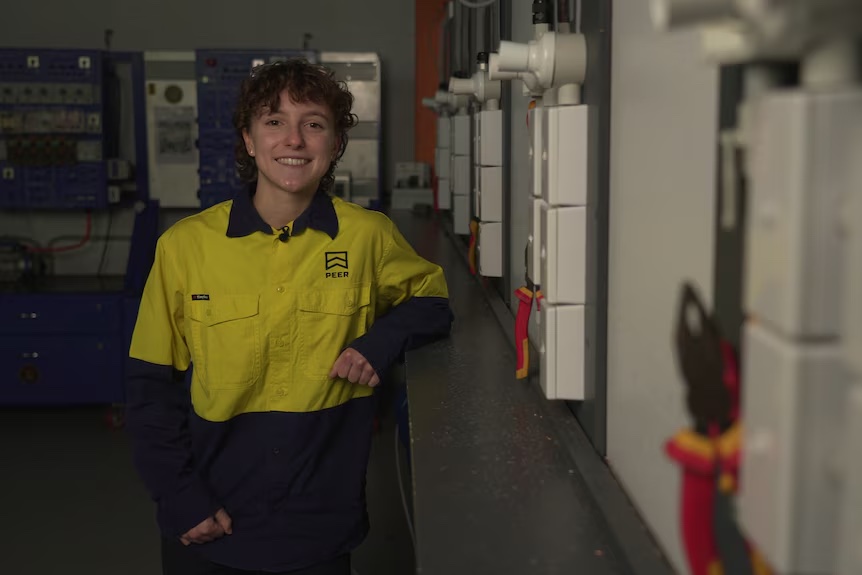
“I might not be as tall and strong as a guy on site, but I’ve got different problem-solving skills to him,” she says.
“I’ve seen it firsthand. We [men and women] work really well together.”
But, to bring more women into the trade sector, Isabella believes visibility and education are crucial.
“Every time we speak about women in trade, it’s always at trade events,” she says.
“I just think we need to go broader so get out to the schools, get out to society in general.
“If it doesn’t even seem like an option, people aren’t going to consider it.”
